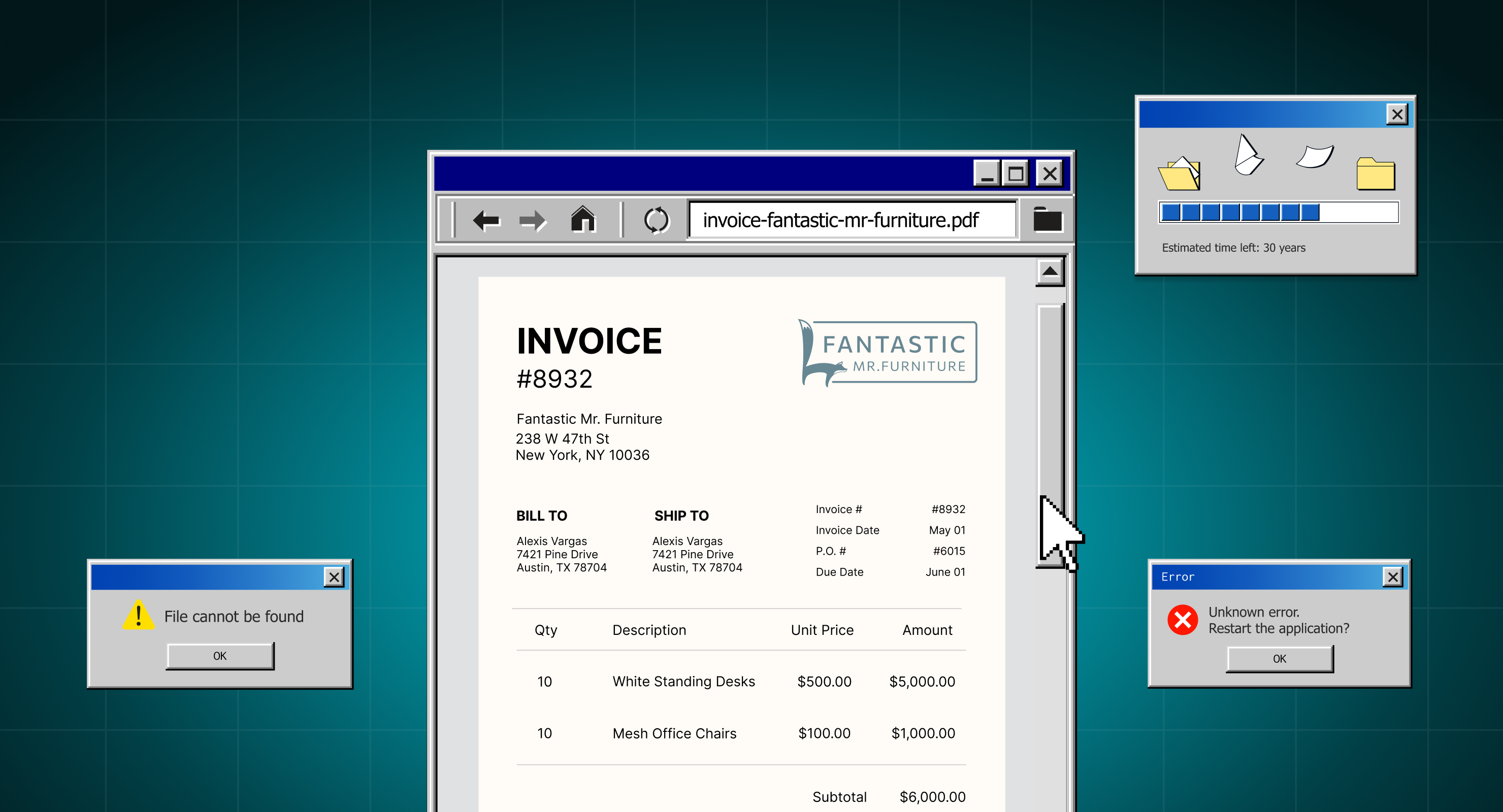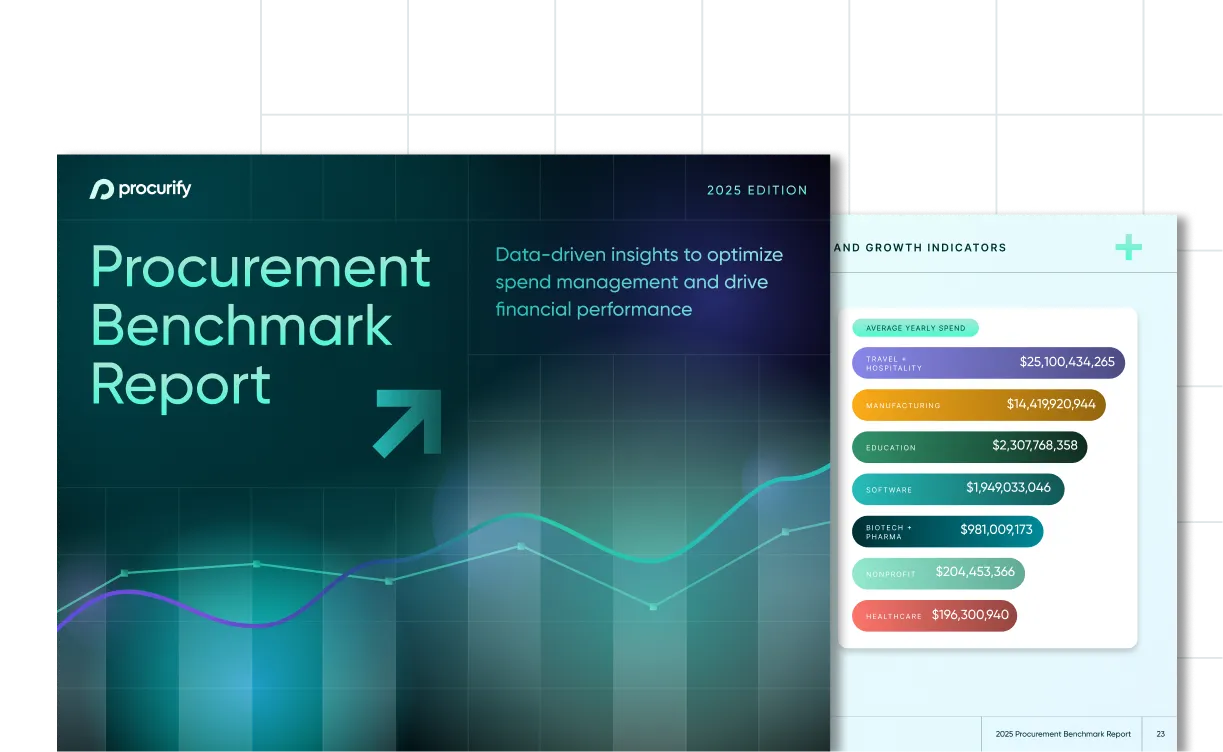
Is Your Spend Strategy Stuck in the 90s? Time for Automated Spend Management Software
Don’t be a Blockbuster in a Netflix world. Blockbuster didn’t fail because people stopped renting movies. It failed because it didn’t react fast enough to change; they held on for far too long to processes that weren’t scalable. It wasn’t that the company didn’t see the shift happening; they just simply underestimated how fast that shift would happen.
The same might be said today on the conversation around automated spend management software solutions. It’s not that finance teams don’t understand the need for visibility and real-time insights; it’s that the true cost of sticking with Excel never gets measured. The cracks don’t get noticed right away. A few delays here, a reconciliation error there, it’s all manageable. More often than not, Excel is seen as the easier option. Companies lean on spreadsheets because they’re comfortable and accessible. And because the idea of adopting a new technology is too big of a project to take on.
In 1999, that worked. Now, however, it’s one of your biggest liabilities. This article breaks down the true cost of managing spend through spreadsheets and why automated spend management software should be your next business upgrade.
Why Excel is holding back your spend management strategy
Spreadsheets are great for many things—tracking to-dos, building simple budgets, and organizing lists. But when it comes to managing company spend, Excel is like dial-up internet in a world of high-speed Wi-Fi. It’s static, slow, and disconnected from the speed of business today. Modern organizations need real-time spend visibility and proactive controls—two things Excel simply wasn’t built for.
Remember the sound of the modem connecting? That screeching noise followed by the long, agonizing wait to load a single webpage. You’d click a link and wait. And wait. And wait. Each refresh was a gamble—sometimes it would load, sometimes it would freeze, and sometimes you’d get booted off entirely.
That’s Excel for spend management.
- You enter a purchase order, and it just… sits there.
- You chase down approvals through email chains, hoping the numbers haven’t changed by the time you get them back.
- You update a budget line item, double-check the formula, and pray there’s not a hidden error buried five tabs over.
Just like dial-up. It works—but barely.
Relying on Excel for spend management isn’t just slow, it’s expensive. Think about all the hidden costs that can pile up, like the workforce hours spent cross-referencing spreadsheets, waiting days for a manager to return from a conference for procurement purchase approval and lengthy accounts payable processing times.
For instance, our recent Procurement Benchmark report analyzing over $20B in real spend data found healthcare AP processing times sitting at 124 hours. This is not just a five-day delay; this is strained relationships, inefficient resource management, and a big hit to an organization’s cash flow. Automated spend management software isn’t just about efficiency; it’s about fixing the costs you might not even be aware you have.
The business case for automated spend management software
If you’re building a business case to move away from Excel and invest in a spend management solution, the argument is simple: managing spend with spreadsheets is like waiting for a page to load while everyone else is streaming in real-time.
By the time you finally see where your budget stands, decisions have already been made, money has already been spent, and you’re playing catch-up instead of moving forward. If your competitors are already operating with real-time visibility and streamlined approvals, why aren’t you?
Here’s what automated spend management software can do:
Centralized spend management: visibility, approvals, and control
Managing purchase requests, approvals, budgets, and invoices across disconnected systems often leads to delays, miscommunication, and data gaps. A centralized procurement platform solves this by bringing everything into one connected system. With all procurement and financial data in one place, teams have real-time visibility into budgets, purchase orders, and spending activity.
When a purchase request is submitted, it’s automatically routed to the right person for approval—whether they’re in the office, traveling, or working remotely. Mobile-friendly procurement management software solutions allow decision-makers to approve requests from anywhere, reducing delays and keeping things moving efficiently. All actions—who approved what, when, and why—are logged automatically, creating a clear audit trail that’s easily accessible.
But visibility alone isn’t enough. Managing supplier performance and tracking contract terms requires more than just data logging. Sure, Excel might let you log vendor details, but it can’t help you track performance metrics or monitor contract obligations. Automated spend management goes beyond basic record-keeping by providing full visibility into supplier relationships and contract terms. It centralizes contract creation, execution, and storage in a single platform, with features like contract templates, automated approval workflows, key date alerts, and secure digital storage. This centralized approach not only improves efficiency but also ensures better control over contractual obligations, reducing the risk of missed renewals or compliance issues.
These real-time insights are crucial because traditional Excel-based procurement doesn’t just slow things down—it blocks visibility into key performance metrics. When spending patterns become clear, finance and procurement teams can optimize decisions. For example, if supplier prices start trending upwards or specific departments regularly exceed budget thresholds, these insights allow you to make data-driven decisions before problems grow. Spend analysis tools replace guesswork with clarity, supporting more strategic financial planning.
With automated spend management software, teams finally have visibility into the metrics that matter most, including:
- Approval cycle times — How quickly purchase orders are moving through the system.
- Budget variance — Visibility into areas of overspending.
- Supplier performance — Tracking delivery times, compliance, and costs.
- Invoice processing time — Measuring how long it takes from receipt to payment.
Secure and compliant spend management
Managing company spend with Excel opens the door to data vulnerabilities. Spreadsheets are often shared through email or cloud storage, lacking proper encryption and access controls. This exposes sensitive financial information to unauthorized access, increasing the risk of data breaches. In contrast, Automated Spend Management Software provides built-in security features such as role-based access, encrypted data storage, and audit trails, ensuring that only the right people have access to critical financial data. This level of protection not only safeguards company information but also helps meet compliance requirements like SOC 2 and GDPR regulations that Excel simply wasn’t designed to support.
Integrating automated spend management
A common barrier to moving away from Excel is the fear of a complex and time-consuming implementation. However, moving to a modern automated spend management platform is often more straightforward than anticipated. Modern platforms are designed to integrate with existing financial systems, including ERP platforms, accounting software, and AP tools. The onboarding process is typically well-structured, with user-friendly interfaces that allow teams to get up and running quickly, and dedicated support makes it easy for teams to transition without interrupting day-to-day operations. In most cases, businesses see improved efficiency and ROI within weeks, not months, of switching to automated spend management.
Leaving the Windows 95 mindset behind
Think back to the days of Windows 95, when spreadsheets were the pinnacle of business technology. For its time, Excel was revolutionary, offering a way to manage budgets and track spend with more precision than pen and paper. But that was a different era. Business wasn’t moving at real-time speed, decisions didn’t demand instant visibility, and teams weren’t spread across geographies, needing synchronized data at a moment’s notice.
The days of piecing together budget reports and waiting for manual reconciliations are behind us. It’s time to leave the Windows 95 mindset in the past and move toward smarter, faster, more connected spend management. It’s time to upgrade to an automated spend management solution that matches the speed and complexity of modern business.

2025 Procurement Benchmark Report
Powered by $20B+ in proprietary data you won’t find anywhere else.
